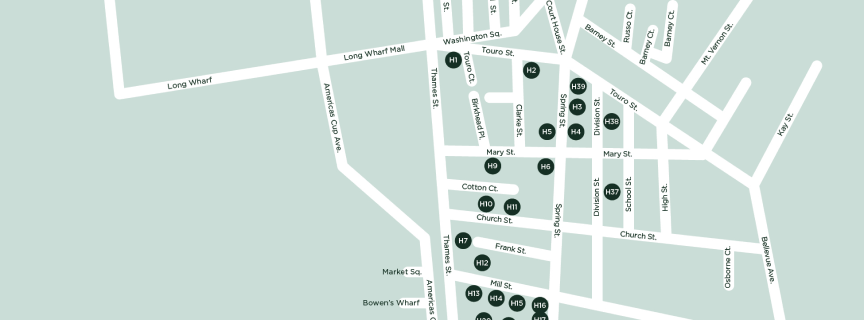Founder
Doris
Duke
About Doris Duke
Doris Duke (1912-1993), philanthropist, collector, and preservationist, first came to Newport in 1915 at the age of three when her family began to summer here. Her parents, James B. and Nanaline Duke, would eventually buy Rough Point as a permanent summer home for the family. With James Duke’s death in 1925, Doris inherited the estate along with most of her father’s great fortune.
Reinvestment in Newport
After the devastation of Hurricane Carol on Newport in 1954, Nanaline and Doris Duke decided to close Rough Point and the house was emptied of its contents. Although they began to entertain proposals for the long-term lease of the property, Doris ultimately decided instead to reopen Rough Point. In the summer and fall of 1957, she began to relocate most of the paintings, porcelain, furniture, and textiles from the family’s New York house to Newport.

Visionary Philanthropist
After re-establishing Rough Point as her home, Doris Duke became concerned about the future of Newport and the city’s earliest buildings. 18th-century houses along the historic Thames Street waterfront and Historic Hill neighborhoods were being demolished at a rapid pace to make way for widened roadways. As a counter-balance to these efforts, Duke founded the Newport Restoration Foundation in 1968, in an act that helped spur economic renewal and encouraged wider historic preservation efforts across the city. Under Duke’s leadership, NRF restored more than 100 18th- and early 19th-century buildings on Aquidneck Island.

A Philanthropic Impulse
Duke’s approach to the historic fabric of Newport — to restore, maintain, and lease to tenant-stewards — was unusual in the field of historic preservation but not out of keeping with her long track record as a collector of fine and decorative arts, including architectural material, and a growing impulse at the time to make cultural heritage accessible to future generations. When she founded NRF in 1968, Doris had long been an art collector who had begun to consider her legacy and public responsibility:
In 1964 she opened Duke Gardens, a series of greenhouses with an extensive and wide-ranging collection of plants from around the world, at Duke Farms, her home in Hillsborough, New Jersey. In 1965, she added a codicil to her will that would make her estate in Honolulu, Shangri La, a center for Islamic art and culture, open to the public and showcasing her life-time collection of Islamic art.
And once she had settled back in Newport in the late 1950s, Duke began to add significant works of European fine and decorative arts to her parents’ collections, perhaps with the intention that Rough Point one day would also be opened to the public.

Active Preservationist
Doris Duke threw herself fully into the work of restoring the houses acquired by the Newport Restoration Foundation. According to documentary evidence and firsthand recollections of the architects and tradesmen who worked for NRF, she was hands-on in the process: regularly meeting to review drawings and visiting building sites to approve or make changes to work on individual buildings.
Duke also sought guidance from established preservationists. In addition to Preservation Society of Newport County founder Katherine Warren, she consulted frequently with Antoinette Downing, the architectural historian whose efforts are credited with saving much of the historic College Hill district in Providence from threats of demolition in the late 1950s and 1960s. Downing’s 1952 book (co-authored with Vincent Scully), The Architectural Heritage of Newport, Rhode Island, was also indispensable to the early work of NRF.

NRF & Doris Duke as Catalysts
Doris Duke’s investment in in preservation and economic urban restoration has had an irrefutable impact on the cityscape of Newport. The nearly $22 million that Duke donated to NRF represents the largest gift to any single organization in her lifetime. Equally remarkable is how the early strategy of NRF to preserve in clusters — restoring several houses on one street or one block at one time — multiplied the impact of this investment by inspiring others to restore other historic buildings in that area.
Learn More
Online Resources
Lorem ipsum dolor sit amet, consectetur adipiscing elit. Quisque sit amet tortor a orci ultrices varius non feugiat nunc.
Print Resources
Lorem ipsum dolor sit amet, consectetur adipiscing elit. Quisque sit amet tortor a orci ultrices varius non feugiat nunc.
Lorem ipsum dolor sit amet, consectetur adipiscing elit. Quisque sit amet tortor a orci ultrices varius non feugiat nunc.

